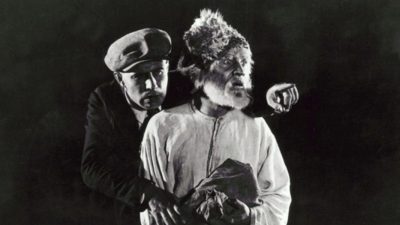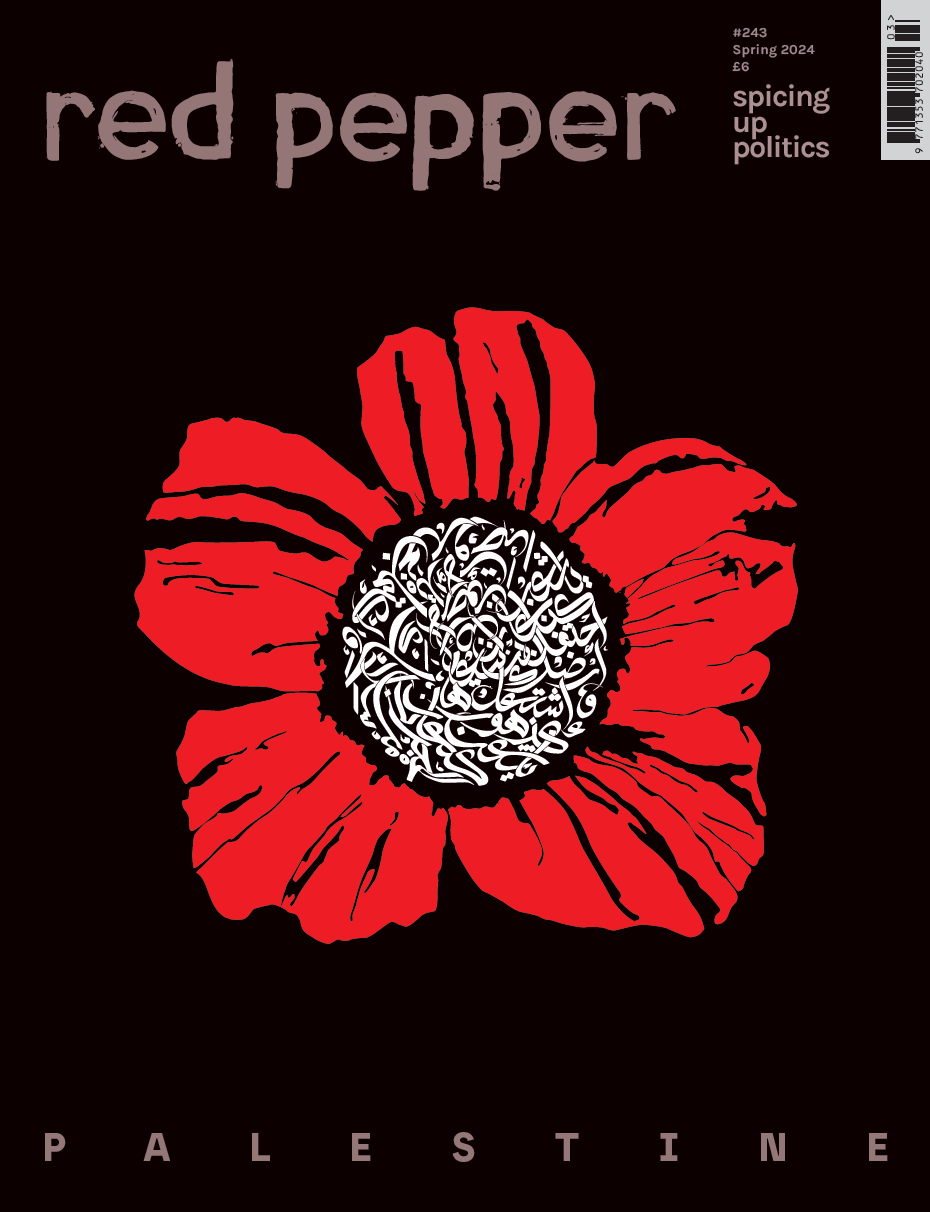In 1928, pioneering filmmaker Sergei Eisenstein took a call from a representative of the All-Ukrainian Photo Cinema Administration (VUFKU), which controlled the entire film industry of the Soviet Socialist Republic of Ukraine, begging him to ‘come and see this film they’ve sent us’, which ‘no one here can understand’. In the Hermitage Gardens’ hall of mirrors, recalled Eisenstein, ‘a young Ukrainian director’, Oleksandr Dovzhenko, would ‘receive his baptism of fire’ as the VUFKU man asked Eisenstein and fellow director V I Pudovkin: ‘Is it or isn’t it good? Help us decide’.
The film in question was Zvenigora. This was 33-year-old Dovzhenko’s fourth work, but the first to seriously trouble Soviet censors, because of both its exploration of Ukrainian nationalist themes and its avant-garde approach to narrative at a time when Stalin began to clamp down on ‘bourgeois’ forms of modernist experimentation. Yet Dovzhenko called Zvenigora his ‘party membership card’, convinced that its depiction of the Bolshevik victory and arrival of Soviet industry as the culmination of a thousand years of Ukrainian history would put him in good grace.
With Stalin not yet in absolute control of the USSR, the decision about Zvenigora’s acceptability was outsourced to the nation’s leading filmmakers, including an approving Eisenstein. This let Dovzhenko complete his ‘Ukraine trilogy’ with Arsenal (1929), about a key battle in the post-revolutionary civil war, and his masterpiece, Earth (1930), a poetic story about the collectivisation of Ukrainian farmlands, before the tide turned against his idiosyncratic approach to cinema.
Hidden treasure
As the above may suggest, Zvenigora is hard to summarise. The film is a legend, or set of myths, structured upon the motif of hidden treasure. An old man tells his grandson, Pavlo, about riches buried in a hill (‘Zvenigora’) a thousand years ago, which symbolise Ukrainian identity. The old man’s stories range from the Cossacks’ 17th-century battles with the Poles to the Great War and its aftermath. They lead Pavlo to dream of sudden wealth, and to become a bandit and émigré-adventurer.
Zvenigora remains as formally exhilarating as when Eisenstein was first ‘delighted by the personal manner of its thought’
Eventually, Pavlo attracts an audience of wealthy reactionaries to a Paris theatre, who pay to witness his suicide, but he takes the receipts to fund counter-revolutionary sabotage in Ukraine. When the old man fails to derail a Red train (or ‘fire monster’) that he attacks on the orders of a Ukrainian duke, his other grandson, Tymosh, persuades him to join the revolution and Pavlo takes his own life.
The message of the film – that the individual cannot triumph over nature, but can only control it via collective action – was ostensibly socialist and pro-industry. But its non-linear cutting across centuries, and emphasis on personal subjectivity, made Zvenigora more appealing to the artistic avant-garde than the wider public.
Nearly a hundred years later, Zvenigora remains as formally exhilarating as when Eisenstein was first ‘delighted by the personal manner of its thought, by its astonishing mixture of reality with a profoundly national poetic imagination’. Dovzhenko’s techniques still impress. The double-exposures that appear when the old man recounts the distant past retain their beautiful, haunting quality. The battle scenes, with their rapid cross-cutting, are as vivid as Eisenstein’s famous Odessa Steps sequence in Battleship Potemkin. The cut from a long montage of Soviet mining to the old man coming out of the ground with a rifle, showing how the old still exists alongside the new, is sublime. For these reasons, Zvenigora was ranked not just alongside the best of the 1920s Soviet avant-garde films, but also those of D W Griffith and the German expressionists – comparisons that made Dovzhenko an object of official suspicion.
An enigmatic legacy
Removed from the time and place of its political context, Zvenigora is perhaps even more enigmatic than in the USSR of 1928. Dovzhenko, the seventh child of illiterate parents, whose filmmaking was self-taught, had been a Borobtist – a faction of Ukrainian nationalists advocating a domestic, peasant communism – after the October revolution. The Borobtists are little recalled, with Nestor Makhno’s Revolutionary Insurgent Army of anarcho-communists better capturing the historic imagination. However, Makhno had long since gone into exile, having turned against the Bolsheviks, before Zvenigora was made, and does not feature in it. Made just before the first Five Year Plan was introduced, the film’s praise for rapid industrialisation could not account for the purges of Ukraine’s intelligentsia (the ‘executed renaissance’), nor the mass starvation in the republic.
Zvenigora’s call for international working-class solidarity strikes a better note against the backdrop of a war between Putin’s far-right regime and Zelenskyy’s neoliberal government
Amid the current conflict, Zvenigora’s conclusion that integration into the USSR was the best outcome to a millennium of traumatic history would be contested by almost every side: Putin, who sees Ukrainian and Russian culture as intertwined from the days of the Kievan Rus’ federation, a thousand years ago; and many Ukrainians, who tore down Lenin’s statue and pressed for ‘de-communisation’ after the Maidan revolution of 2014, and are now fighting Russia’s efforts to annex more of their territory.
Zvenigora’s call for international working-class solidarity – between Germans and Russians in World War I, and Russians and Ukrainians afterwards – strikes a better note against the backdrop of a war between Putin’s far-right regime with ethno-nationalist, expansionist aims, and Zelenskyy’s neoliberal government in a country with a troubling number of nationalist militias. Its independent attitude towards cultural and political orthodoxies, and assertion of local history and identity within an internationalist movement, explain why Dovzhenko remains so highly regarded in post-Soviet Ukraine, where the national film centre, in Kyiv, is still named after him.
Dovzhenko’s relationship with Stalin and the censors remained complicated. The authorities criticised Arsenal (1929) for its ambivalence about the morality of violent retribution, but Stalin liked it. Dovzhenko was awarded two Stalin Prizes during the 1940s, but several of his colleagues were killed or sent to labour camps during the purges, including cameraman Danylo Demutsky. Various officials, including Nikita Khrushchev, attacked Dovzhenko’s war documentary Ukraine in Flames (1943) for its ‘veiled nationalistic moods’. Despite – or perhaps because – of this criticism, Dovzhenko’s reputation remains high, in Ukraine and abroad, and the current crisis only reminds us of the power and importance of his work.
This article first appeared in issue #236, Summer 2022, The War Racket










